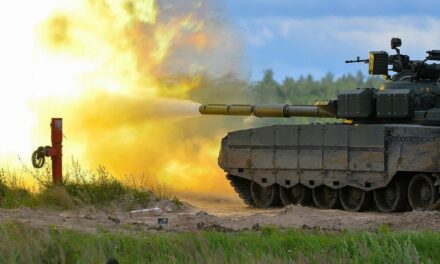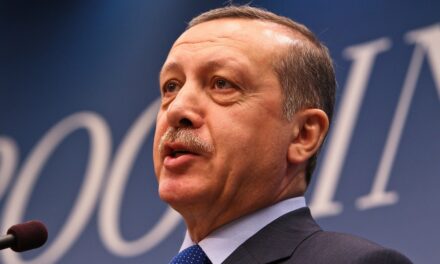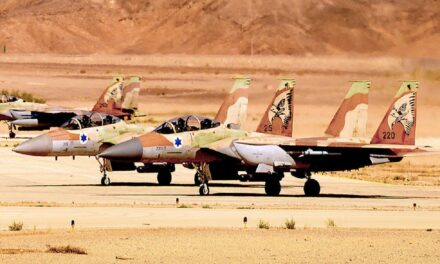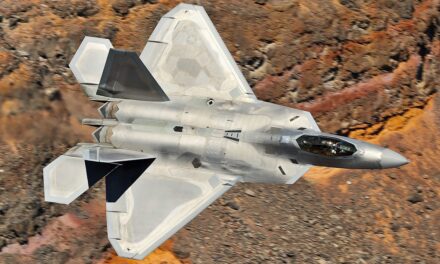We support our Publishers and Content Creators. You can view this story on their website by CLICKING HERE.
The civil war in Syria is one of the world’s largest proxy conflicts that is still ongoing, albeit a frozen one today. The United States, Russia, Iran, Turkey, and Israel all have zones of influence in Syria today, filled with dozens of factions, all with different end goals.
Eastern Syria witnessed direct combat between the US military and Russian mercenaries, which would not only set the tempo of the frozen war in Syria but an overall standoff between America and Russia.
The subsequent battle between Wagner and US special forces would fuel the Kremlin’s paranoia about Russia’s conventional military capabilities and set the temple for nuclear threats during their invasion of Ukraine.
The Battle of Khasham
Against the backdrop of the rise of ISIS, an American-led coalition conducted counterterrorism operations in Iraq and Syria, with US special forces and Marines supplementing the Kurdish-led Syrian Democratic Forces (SDF) in the latter.
On the night of February 7th, 2018, a large force of Syrian military supplemented by the notorious Wagner Group was amassing near the Conoco fields of Deir Ezzor where a few dozen American special operations forces, and SDF were operating as a patrol base. Several dozen T-72 tanks and armored personnel carriers would supplement the Syrians and Russians.
The Conoco fields are rich with oil the Syrian government has desperately wanted back to help combat global sanctions. Wagner, a paramilitary that makes most of its funding through the black market, sees the oil fields as future income.
The Syrian detachment and Wagner mercenaries would instigate the Battle of Khasham by firing at the American outpost around 10:30 pm. The Pentagon would immediately call and confront the Russian Defense Ministry, and Moscow, under immense pressure and fear of admittance, immediately disavowed that they directed the assault.
After calling Russia’s bluff, the Pentagon would give the US Air Force the green light to conduct a powerful aerial attack against conventional forces not seen since the initial 2003 invasion of Iraq. A wide variety of F-15s, F-22s, Apache’s, AC-130s, B-52s, and MQ-9 Reaper drones would all take part in the counterstrike against the Russian mercenaries and their Syrian counterparts.
Along with US airpower, Marine Corps artillery pounded the Syrian army and Wagner positions, giving cover to the SOF and their SDF allies. Hundreds of Wagner and the Syrian military were killed in less than an hour, with most of their equipment destroyed.
Leaked Russian audio and testimonies stated how vastly superior the Americans were to them and that their commanders left them to slaughter. It became evident the Russians and Syrians were vastly unprepared for a conventional engagement and assumed a show of force would convince the Americans to withdraw.
Battlefield Assessments
The Battle of Khasham was not just a physical blow to the Kremlin but also a moral one. Surviving mercenaries would tell horror stories, and through combat experience, the group never faced such an adversary compared to more unconventional militias and disorganized third-world armies.
The United States enacted a major deterrence that Russia or any of their proxies would never again by force attempt to attack American troops directly in Syria.
Moscow, which for years denied control or direct authority over the Wagner Group, would finally admit its backing and creation of the mercenary organization, as seen in Vladimir Putin’s speech about the organization last year after the failed mutiny.
Putin’s admittance over the Kremlin’s control over Wagner for years can be assessed that Moscow’s top brass knowingly and organized the assault via their pro-Assad regime militias and their mercenaries, as the group’s shadowy operations for years gave Russia plausible deniability.
Under aerial supremacy, the Wagner Group and Assad regime forces were annihilated akin to the Iraqi Republican Guard in their two wars with the United States. With a military focused on ground operations and artillery, Russia’s air power could not match the US even if they were called in to supplement the assault at Khasham.
The Confrontation Fueled Russian Fears of Direct Military Confrontation with the West
The Battle of Khasham gave Russia its worst fears—that despite expanding its defense industry and influence in various regions over the past several years, the country still cannot compete with the US—especially in a direct military confrontation, albeit via mercenaries and Syrian proxies.
Russia is a more grounded military, whereas America focuses on air superiority doctrine. Moscow was willing to allow their then-prized Wagner Group and the Syrian army to be liquidated because they did not have enough assets in Syria to deter and force a retreat of US forces under Central Command (CENTCOM).
Before the full-scale invasion of Ukraine, Russia’s military progress stalled due to corruption, even with key victories from backing the Syrian army in the civil war. Russia’s only aircraft carrier never got off the ground; the T-14 Armata will not be sent to Ukraine due to deficiencies in components and expense, and the premier Su-57 only has a few active units.
In comparison, US air power is currently at new heights with premier F-35s, F-16 block-Cs, and the F-22, which can dogfight with any aircraft in the world. This also does not include quick reaction forces, and the global projection capabilities of the United States military in Russia do not match.
Adjacent to the Battle of Khasham, Russia also attempted to play a bluff over Turkish airspace, and Ankara, calling Moscow’s bluff, shot down an Su-25 over their airspace after a few seconds, killing the pilots.
How Khasham Plays in Ukraine Today
America is not just a superior rival to Russia economically, militarily, and diplomatically, it is also a founding member of NATO—an organization intertwined with the Kremlin’s renewed imperial ambitions.
Russia has suffered casualty rates and equipment losses in Ukraine, not seen in the country since World War Two. NATO, in the meantime, has not suffered casualties or major equipment losses as aid to Ukraine has been slow with trickled amounts.
The entirety of NATO focuses on air power, with most members fielding F-35 and F-16 variants, with some using the Gripens. Russia currently does not have the air power, manpower, and armored vehicles to have a direct war with NATO, and because of this, Moscow relies on their last trump card—the nuclear threat.
Over the past two years, Russia has continuously used nuclear threats to dissuade Western military aid from reaching Ukraine. These “red lines” were broken from the deliveries of HIMARS, Leopard Tanks, storm-shadow and scalp missiles, and recent strikes on Russian territory by Western weaponry.
The Battle of Khasham, initiated by Russian mercenaries, only heightened the Kremlin’s deep fears of direct conventional war with a military that currently excels their own on aerial supremacy, quick reaction, and force projection. Because of this, Russia will continue to use the nuclear threat card to stall for wider production and future negotiations.
Knowing they do not currently have the capabilities for a wider war with America or NATO, Russia will continue to use the nuclear threat card to not only buy time for greater production but also to try to set the tempo for future negotiations.
About the Author: Julian McBride
Julian McBride is a forensic anthropologist, SOFREP contributor, and independent journalist born in New York. He reports and documents the plight of people around the world who are affected by conflicts, rogue geopolitics, and war, and also tells the stories of war victims whose voices are never heard. Julian is the founder and director of the Reflections of War Initiative (ROW), an anthropological NGO which aims to tell the stories of the victims of war through art therapy. As a former Marine, he uses this technique not only to help heal PTSD but also to share people’s stories through art, which conveys “the message of the brutality of war better than most news organizations.”

 Conservative
Conservative  Search
Search Trending
Trending Current News
Current News 





